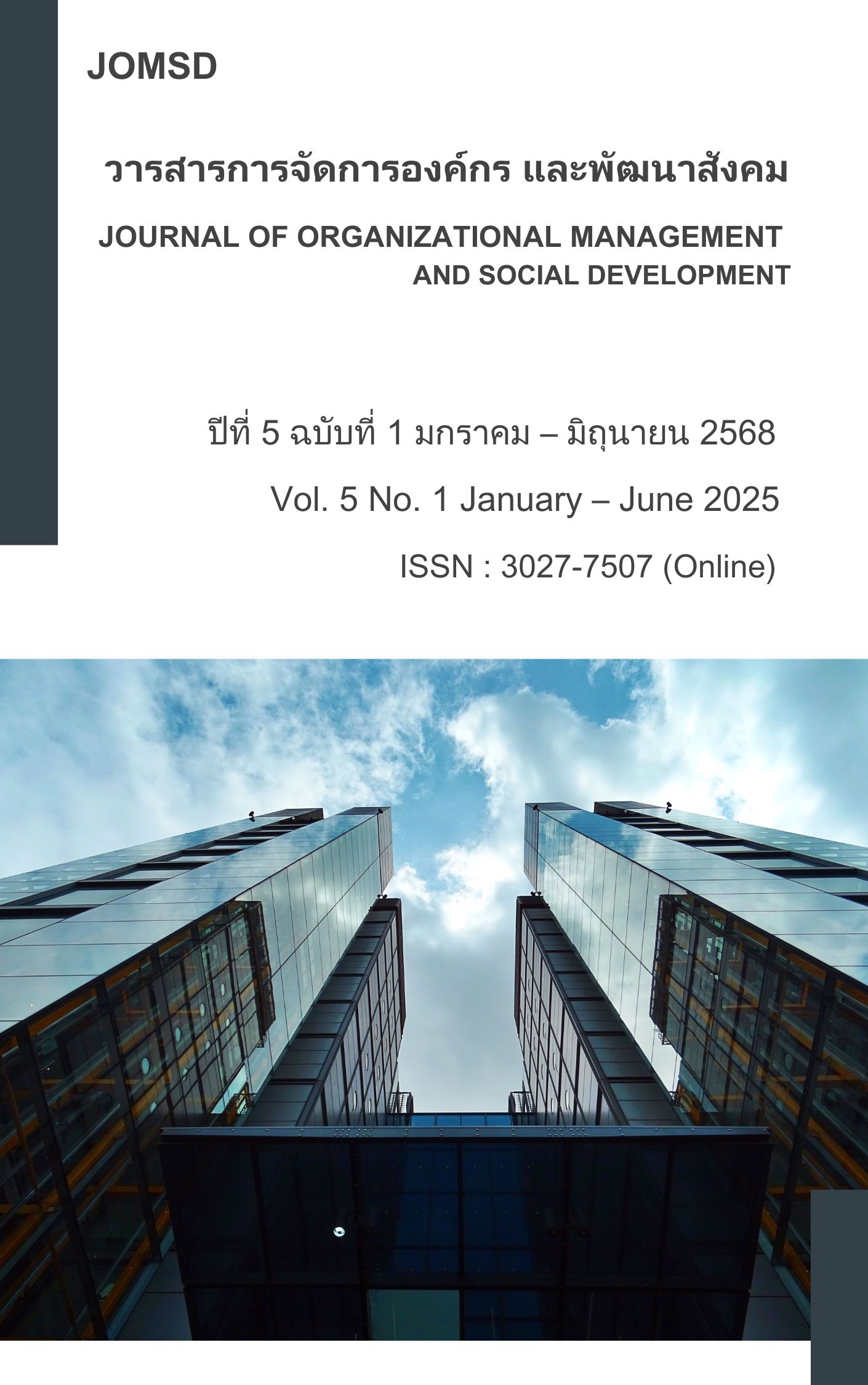Academic Achievement and Participation in Extracurricular Activities for Development of Students in the Faculty of Management Sciences, Prince of Songkla University
Main Article Content
Abstract
This research aimed to study 1) academic achievement of students, 2) participation in extracurricular activities for student development, and 3) participation in extracurricular activities for student development classified by academic achievement levels of students in the Faculty of Management Sciences, Prince of Songkla University. This research was a retrospective study utilizing existing data collection methods. Data collected included students' academic achievement from high school or equivalent education and undergraduate level, along with data on participation in extracurricular activities for student development. The study included 1,905 students who enrolled from the 2017 academic year until graduation in 2020-2022. Descriptive statistics used for data analysis was mean, frequency, percentage, minimum and maximum values, standard deviation, and coefficient of variation. The research results revealed that: 1) Academic achievement of students in the Faculty of Management Sciences, Prince of Songkla University was mostly at an excellent level, and most students had higher cumulative grade point averages at the undergraduate level compared to their high school or equivalent level before entering the Faculty of Management Sciences. 2) Most students participated in university activities during their first year. The top three categories of elective activities that students participated in were: (1) activities enhancing intellectual abilities, social skills and academic and professional skills, (2) activities promoting democracy and institutional pride, and (3) activities promoting health development and recreation, respectively. 3) Students with high academic performance had high levels of participation in extracurricular activities.
Article Details
References
จุฬาลักษณ์ เทียนรุ่งรัศมี และธนณิชชญาณ์ ศรีสวัสดิ์. (2564). ปัจจัยที่มีอิทธิพลต่อผลสัมฤทธิ์ทางการเรียนของนิสิต คณะการแพทย์แผนไทยอภัยภูเบศร มหาวิทยาลัยบูรพา. วารสารศึกษาศาสตร์ มมร, 9(2), 343-354.
ปฐมาวดี ทองแก้ว, จารุวรรณ มณีศรี และอาทิตย์ อินทรสิทธิ์. (2567). การประเมินสมรรถนะของนักศึกษามหาวิทยาลัยสงขลานครินทร์หลังจากการจัดกิจกรรมการเรียนรู้โดยการทําโครงการในรายวิชา 711-101 ประโยชน์เพื่อนมนุษย์: เปรียบเทียบระหว่างการใช้สถานการณ์จําลองเสมือนจริงกับสถานการณ์จริง. วารสารการศึกษาและนวัตกรรมการเรียนรู้, 4(2), 209-221.
รัฐ กันภัย. (2566). ปัจจัยที่ส่งผลต่อผลสัมฤทธิ์ทางการศึกษาของนักศึกษาระดับปริญญาตรี สาขาวิชารัฐประศาสนศาสตร์ คณะมนุษยศาสตร์และสังคมศาสตร์ มหาวิทยาลัยราชภัฏเพชรบุรี. วารสารมนุษยสังคมปริทัศน์, 25(1), 7-16.
สมโชค เพ็งลี. (2563). การศึกษาแนวทางการส่งเสริมการเข้าร่วมกิจกรรมของนักศึกษาระดับปริญญาตรี คณะเกษตรศาสตร์ มหาวิทยาลัยขอนแก่น (รายงานการวิเคราะห์ฉบับสมบูรณ์). ขอนแก่น: งานบริการการศึกษา คณะเกษตรศาสตร์ มหาวิทยาลัยขอนแก่น.
สมพร รุ่งเรืองกลกิจ, เทวธิดา ขันคามโภชก์, ยศวีร์ อิ่มอโนทัย และโสภา อ่อนโอภาส. (2564). การเรียนรู้ผ่านประสบการณ์: พื้นที่ปลอดภัยในการเรียนรู้. วารสารมนุษยศาสตร์และสังคมศาสตร์ มหาวิทยาลัยอุบลราชธานี, 12(1), 89-110.
สำนักการศึกษาและนวัตกรรมการเรียนรู้ มหาวิทยาลัยสงขลานครินทร์. (2558). ระเบียบมหาวิทยาลัยสงขลานครินทร์ ว่าด้วยการศึกษาชั้นปริญญาตรี พ.ศ. 2558. สืบค้นจาก https://reg.psu.ac.th/main/regulations.
สำเริง บุญเรืองรัตน์. (2555). สัมประสิทธิ์ของความแปรผัน. สารานุกรมศึกษาศาสตร์ คณะศึกษาศาสตร์ มหาวิทยาลัยศรีนครินทรวิโรฒ, 46(2555), 68-71.
สุภาภรณ์ เพ็งทอง. (2564). โครงสร้างกิจกรรมเสริมหลักสูตรเพื่อพัฒนานักศึกษา มหาวิทยาลัยสงขลานครินทร์. สงขลา: กองพัฒนานักศึกษาและศิษย์เก่าสัมพันธ์ มหาวิทยาลัยสงขลานครินทร์.
สุวิมล สพฤกษ์ศรี และโชคชัย เตโช. (2559). การเรียนรู้ผ่านกิจกรรมจากห้องเรียนสู่โลกกว้าง: กรณีศึกษาโครงการเสริมสร้างทักษะภาษาอังกฤษสำหรับนักเรียน ณ ประเทศสิงคโปร์และมาเลเซีย. วารสารศึกษาศาสตร์ มหาวิทยาลัยศิลปากร, 13(2), 76-88.
หทัยวรรณ เจียมกีรติกานนท์, กนก รุ่งกีรติกุล และรุ่งฤดี เลียวกิตติกุล. (2565). การจำคำศัพท์ภาษาญี่ปุ่นโดยใช้ สื่อการเรียนรู้แบบออนไลน์ ผ่านกิจกรรมโครงงานตามแนวคิด “Learning by doing”. วารสารอักษรศาสตร์และไทยศึกษา คณะอักษรศาสตร์ มหาวิทยาลัยศิลปากร, 44(2), 131-150.

